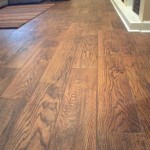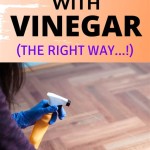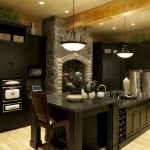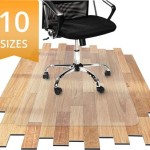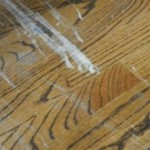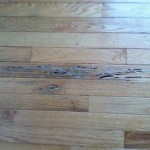Stop Rug Movement on Wooden Floors: A Guide to Preventing Slipping and Damage
Wooden floors are a timeless and elegant choice for homes, but their smooth surface can pose a challenge when it comes to keeping rugs from slipping and sliding. This constant movement can be frustrating, leading to tripping hazards, uneven wear and tear on both the rug and the floor, and a generally untidy appearance. Thankfully, there are several effective methods and strategies to address this issue, ensuring that your rugs stay put and your wooden floors remain pristine.
1. Understanding the Underlying Causes
Before delving into solutions, it's crucial to understand why rugs tend to move on wooden floors. The primary culprits are often:
- Smooth Floor Finish: Polished or sealed wooden floors lack sufficient friction, allowing rugs to slide easily.
- Rug Material and Backing: Rugs with thin or slippery backing materials, such as silk or synthetic fibers, are more prone to movement.
- Rug Size and Placement: Large rugs that are not properly secured can shift more easily, especially in high-traffic areas.
- Uneven Floor Surface: Warped or uneven floorboards can contribute to rug movement, creating uneven support.
By identifying the specific reason behind your rug's movement, you can select the most appropriate solution.
2. Effective Solutions for Preventing Rug Movement
The following methods can effectively prevent rugs from sliding on wooden floors:
A. Non-Slip Rug Pads
Non-slip rug pads are a widely popular and effective solution. These pads are designed with a textured or grippy bottom surface that creates friction against the floor, keeping the rug in place. They come in various materials, including rubber, felt, and foam, each with its own advantages and disadvantages.
- Rubber Pads: Offer excellent grip and durability, particularly for heavy rugs or high-traffic areas. However, they can be more expensive and may leave marks on delicate floor finishes.
- Felt Pads: Provide a good balance of grip and affordability, making them suitable for most rugs. However, they may not be as durable as rubber pads and may require replacement more frequently.
- Foam Pads: Offer cushioning and comfort but may not provide as much grip as rubber or felt pads. They are a good option for rugs in low-traffic areas or for rugs with a thick pile.
B. Rug Grippers
Rug grippers are small, adhesive strips that stick to the underside of the rug, preventing it from sliding. They are a relatively inexpensive and convenient option. However, they are less effective for large rugs or those with very slippery backs, and their adhesive may leave residue on the rug or floor.
C. Specialized Rug Tape
Rug tape is a double-sided adhesive tape specifically designed for securing rugs to the floor. It provides a strong, durable grip that can withstand heavy traffic and even prevent rug corners from curling. However, it can be difficult to remove without leaving residue and may damage delicate floor finishes.
D. Rug Anchors
Rug anchors are small, weighted devices that attach to the corners of the rug and hook onto the floor, securing the rug in place. They are especially effective for large rugs or those placed in high-traffic areas. However, they may be more visible than other options and require a bit of installation effort.
3. Additional Tips for Maintaining and Extending Rug Lifespan
Beyond preventing movement, implementing these practices will further enhance your rug's lifespan and improve its appearance:
- Regular Vacuuming: Removing dust and dirt buildup will prevent it from accumulating under the rug and contributing to slippage.
- Professional Cleaning: Periodically cleaning your rugs by a professional will remove deep-seated dirt, stains, and allergens, preserving their beauty and extending their lifespan.
- Rotate Regularly: Rotate your rugs every few months to distribute wear and tear evenly, preventing areas from becoming excessively worn.
- Avoid Direct Sunlight: Prolonged exposure to direct sunlight can fade rug colors, so position them away from windows or use curtains or blinds to filter sunlight.
By understanding the causes of rug movement, choosing the right solutions, and implementing preventative measures, you can ensure that your rugs stay in place and your wooden floors remain protected.

How To Keep Rugs From Sliding Polished Habitat

How To Keep Rugs From Sliding Polished Habitat

How To Keep Rugs From Sliding Polished Habitat

3 Ways To Stop A Rug From Moving On Wooden Floor Wikihow Life

How To Keep Rugs From Sliding Polished Habitat

3 Ways To Stop A Rug From Moving On Wooden Floor Wikihow Life

3 Ways To Stop A Rug From Moving On Wooden Floor Wikihow Life

3 Ways To Stop A Rug From Moving On Wooden Floor Wikihow Life

How To Stop Rugs Moving On Carpet Runrug Com

Do You Really Need A Rug Pad Floorspace
